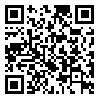BibTeX | RIS | EndNote | Medlars | ProCite | Reference Manager | RefWorks
Send citation to:
URL: http://jdm.tums.ac.ir/article-1-5129-en.html
Background and Aims: Nowadays, the application of all ceramic restorations are being raised, because of their physical characteristics, such as translucency and good appearance. Numerous researchers investigated the impact of surface treatments on the bond strength of zirconia ceramic with resin cements. The aim of this study was to compare the microshear bond strength of Cercon and Zirkonzahn (two kind of zirconia) ceramics, to two types of resin cements after thermocycling.
Materials and Methods: In this study, 24 rectangular specimens were made from each group of Cercon and Zirkonzahn ceramics. After sandblasting, these specimens were connected to 3×1 mm2 composite cylinders by two resin cements (Panavia F2 and Rely X Unicem2). After performing a thermocycling regime for 5000 cycles (5-55 ◦ C), the microshear bond strengths were measured by a universal testing machine. The mode of failures were determined by a stereomicroscope. Data were analyzed using two-way ANOVA.
Results: Type of ceramics had no significant impact on the microshear bond strength (P=0.317). The highest bond strengths in both ceramics were obtained with Reply X Unicem (P=0.035). The predominant failure mode was adhesive between the cement and ceramic.
Conclusion: Type of resin cement had a significant effect on their bond strengths to zirconia ceramics.
Received: 2013/05/31 | Accepted: 2014/01/21 | Published: 2014/03/16
| Rights and Permissions | |
 |
This work is licensed under a Creative Commons Attribution-NonCommercial 4.0 International License. |




